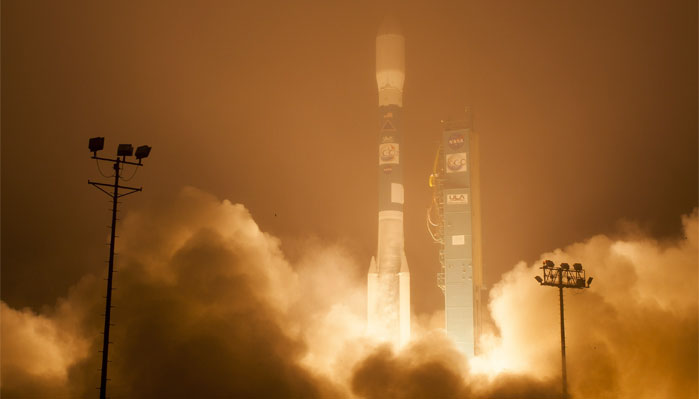United Launch Alliance Delta II rocket as it launches with the Orbiting Carbon Observatory-2 (OCO-2)satellite onboard from Space Launch Complex 2 at Vandenberg Air Force Base, California
AFP/Vandenberg Air Force Base, California
NASA on Wednesday launched a satellite designed to track carbon dioxide, a leading greenhouse gas that is responsible for global warming.
The Orbiting Carbon Observatory-2 took off aboard a Delta 2 rocket at 2:56 am (0956 GMT) from Vandenberg Air Force Base in California.
The successful takeoff was a boon to NASA, after two previous bids to launch Earth science spacecraft -- one for carbon and another for aerosols -- failed due to rocket malfunctions in 2009 and 2011.
An attempt to launch the satellite Tuesday was also aborted at the last minute, after engineers discovered a problem with water flow to the launch pad.
Tim Dunn, NASA launch director, said the team received "very good news" that the satellite's solar arrays had deployed on schedule and described the mood in mission control as one of "pure joy."
"The spacecraft was rock-solid," he said on NASA TV, after live video showed mission control staff hugging and shaking hands.
"It all came together tonight."
The satellite is now a part of the A-Train, a constellation of five other international Earth-observing satellites.
The OCO-2 mission lasts two years and aims to provide the most detailed picture to date of natural sources of carbon dioxide -- where it is coming from and where it gets absorbed on the Earth's surface.
"The observatory will study how these sources and sinks are distributed around the globe and how they change over time," NASA said.

